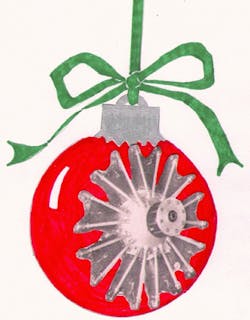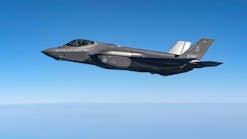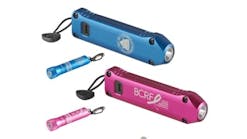T’was the Night Before Christmas at Pratt & Whitney
Frederick Brant Rentschler (1887-1956) and Wasp No. 1 (1925-2007)
His co-workers nicknamed him “Horsepower.”
His remarkable career spanned more than 40 years, two world wars and the advent of commercial airlines. Working shoulder to shoulder among the industrial giants that employed millions, some historians measure his contribution to aircraft engines, second only to Charles Taylor.
He is well known as the organizational force which combined Pratt & Whitney Aircraft Company, Boeing, Vought, Hamilton, Sikorsky, Standard and Stearman to form United Aircraft and Transport Corp. (UAT) in 1928 as the largest aircraft company in the world. When governmental regulation broke up UAT (in 1934) this giant of aviation industry became president of its offspring, United Aircraft.
From machine shop to board room he remained “Horsepower” Frederick Rentschler.
“The best airplane can only be designed around the best engine.” - FBR
Rentschler was one of seven children born to German immigrants who made Hamilton, OH, their home during 1873. After graduating from high school, he followed his passion and natural abilities for technology at Princeton University where he graduated with a Bachelor of Science degree in 1909. Aeroplanes were still thrilling spectators with their first glimpse of manned flight when Rentschler’s father George, founded Hooven, Owens & Rentschler Company, one of the largest machine tool operations in the United States.
Hooven, Owens & Rentschler was successful in producing gas, oil, and steam turbines; and between 1909-1914 also built the four- and six-cylinder Republic Motor car. It was here while working through school breaks that Rentschler learned to appreciate engines. Niles Tool Works, headed by president James K. Cullen, operated out of the adjacent building. Cullen watched young Rentschler apprentice in the shops. “To know tools, Cullen believed, “a man has to get his hands dirty using them.” The good will and respected business relationships between the Cullen and Rentschler families were later to play a significant part in the formation of Pratt & Whitney Aircraft Company.
Returning to Hamilton after college, Rentschler declined the opportunity for an office job. Instead, the work ethic handed down through generations of European craftsmen influenced his choice to work with his hands as a moulder and machinist. Friends later recalled that he worked “10 hours a day, six days a week, as a puddler in the family foundry.”
Rentschler’s youth was stable, privileged, and steeped in old-world traditions of a close-knit family in a close-knit community. It was a time and place in which the butcher, the mailman, the lawyer, and the grocery clerk were all greeted as “Mister.” The mannerisms of those times remained part of Rentschler’s personality for the rest of his life.
Imbued with patriotism, Rentschler joined the Army Signal Corps in 1917, and as a 1st Lieutenant, was immediately assigned to inspect Hispano-Suiza engines manufactured at the Wright-Martin Aircraft plant in New Brunswick, NJ. After WWII, Wright-Martin became Wright Aeronautical Corp. [1919] with Rentschler on staff as a design engineer. Rentschler’s father expected him to join his business and did not think there was much future in aviation. “Aviation is a damn fool business, mostly for sportsmen,” he often said. “It has nothing a man can sink his teeth into like steam turbines or real machines.’’ Despite his father’s hopes, “Horsepower” accepted the job as president of Wright-Aeronautical, continuing to refine and develop existing engines.
Between 1919 and 1924 Rentschler returned home for vacations, and in 1921 he married his home-town sweetheart, Faye. Their union lasted until her death in 1953.
The consuming passion
Intimate observations from those who remembered him at Wright Aeronautical, describe a man who “had fit in well with the civilian workers.” The Wright company newspaper joked, “The only thing he takes seriously, other than his work here, is eating … a bully fellow … with a leaning toward the movies.” This first job at Wright changed Rentschler’s life, as described by Ohio historian Jim Blount who has written several articles on the Rentschler family legacy:
“Once he had seen an aircraft engine tick over and examined with his trained eye the scrupulous precision, for that time, with which the components were machined and finished, he knew his destiny. The aircraft engine fulfilled [his] longing,” and he found his niche. He later described it as a “consuming passion.”
Not all Americans were as enthusiastic about aviation. Blount summarizes the era between the wars:
“By government financed development, France, England, and Germany had quickly outstripped the United States in the refinement of airframes and engines. … What little development … was in the Curtiss Aeroplane and Motor Corp. … with the Curtiss OX5 engine, 90-100 hp. Compared to the European aircraft the American Jenny with the OX was not in the same league with the Spad, the Nieuport, the Fokker, and the Sopwith Camel … [all] using French Hispano-Suiza, Le Rhone, and Mercedes engines.”
Frederick Rentschler, concluded Blount, “was determined to correct the U.S. aviation deficiencies.”
During his presidency, Rentschler was often in conflict with Wright’s board of directors, particularly with regard to recycling profits into research and development. His own policy was to direct his engineers to look five years ahead of current technology. Faced with insurmountable differences, he resigned in 1924, the same year his father died.
“Horsepower” declined to step into the family business, but he did not intend to be unemployed for long. Aware that the Navy needed a quality engine for its carrier aircraft, he decided to create his own company to produce it. His personal motto later became a company theme: “The best airplane can only be designed around the best engine.”
Rentschler, as president, formed his new company around a nucleus of six engineers he had worked with at Wright Aeronautical: George Mead, (as vice president); Andrew Van Dean Willgoos, John Borrup, Don Brown, and Charles Marks. They had no office, no shop, no payroll. Soon, Mead and Willgoos were sitting at drawing boards in Mead’s dimly lit garage in New York. Simply put, their goal was to design an air-cooled, radial engine of at least 400 hp, weighing not more than 650 pounds. With no predetermined pattern, they followed their instincts. American design engineer John Fritz once wryly observed, “If an engine was right, it would look right.”
Already on the aviation scene was Chance Vought, designing the Corsair 02U aircraft for the Navy. Vought believed military strength lay in air power through continuing intensive development in air frames and power plants. He needed an engine, and encouraged Rentschler to proceed. Confident they had a customer waiting for their product, Rentschler’s group polished its design and looked for a place to build and test the prototype.
Timing is everything
It fell to Rentschler to find funding, and a factory space for the company and the engine (which still had no name!) Rentschler wasted no time rallying encouragement from the Navy, which liked the idea of competitive engine designs funded by private business.
With some family help and well-earned recommendations from James Cullen, (now president of Niles-Bement-Pond Co., a division of Pratt & Whitney) he entered into negotiations with P&W in Hartford, CT. P&W had earned a reputation for precision machine tool products and stable management. Its massive brick buildings were constructed to impart strength, tradition, and the industrious character of the “Connecticut Yankee.”
P&W was “swollen” with post-war surplus cash and fallow factory space which was what Rentschler needed to get started. Rentschler and P&W shook hands on an advance of $250,000 to build a prototype engine at the factory, with $1 million dedicated for the first production costs.
In part of a four-story building set off from the rest of P&W Rentschler crammed engineering offices, a drafting room, and a machine shop into a space the size of a tennis court. Were that not challenging enough, it was filled to the ceiling with tons of tobacco stored by a previous tenant.
Working day and night, using their own vehicles to haul away tobacco leaves, Rentschler and Brown attempted to keep a low profile and avoid speculation on their new project. But they soon attracted those curious to know if they were hiring, including Leicester Lancaster, with experience as a plant engineer for a tool company. So intrigued was he that he accepted the job without immediate pay. He was one of about 25 employees hired over the next four months which comprised Rentschler’s original team.
On Monday, Aug. 3, 1925, Rentschler, Mead, and Brown officially opened their doors to finalize the design created in Willgoos’ garage. Among themselves, a “soft” goal was set to test their first engine by Christmas. Each employee was promised a turkey if the job got done on time. During that fall, the lights over the drawing boards were rarely turned off. Progress increased daily as parts were hand made, assembled, tested, and refined, then reassembled. Literally steps away from their offices, the engine took shape. With a nod to the swarm of activity and the hum of machines that fall, Faye Rentschler suggested calling their first engine the “Wasp.” It stuck. By Christmas Eve, as chimney smoke from Yule logs filled the crisp New England air, “Horsepower” Rentschler and his team tested their first nine-cylinder, air-cooled, radial engine.
“Now boys we have got her done, let’s start her up and see why she doesn’t work.”
- John Fritz, engineer and historian
Mounted on a floor-to-ceiling wooden frame (called a “cradle”) in a small brick “test cell” building, Willgoos and Rentschler agreed that “if it started” they would run the engine at 380 hp. If that held, they would increase it to 410 hp, and once more to 425 hp. With an explosion of noise felt within their stomachs and a puff of white smoke, Wasp engine No. 1 roared to life.
Wasp No. 1 worked. Rentschler’s wife and sister gladly handed out turkeys to the employees of the beehive.
The previous months had been devoted to research and development with sacrifices made by families which went without income. All this would change in 1926.
That Christmas season was both exciting, and tragic. The Rentschlers went back to Ohio to visit family with their infant daughter but while there she became ill and died. They returned to Hartford, expecting another child in July – and Rentschler threw himself into his work. [They later had two daughters and three grandchildren.]
Already being assembled in the former tobacco storage room was Wasp engine No. 2, to ensure perfection of tooling for mass production. And on the drawing board, Willgoos and Mead had begun a new generation of engines eventually named to follow Mrs. Rentschler’s analogy to a beehive, known as the Hornet series.
In March 1926, the Wasp passed tests required by the Navy for an engine to run 50 hours without overhaul. Rentschler set the price for the Wasp at $8,750. Pratt & Whitney Aircraft Engine Corp. signed a contract to produce 200 Wasps, delivering the first five engines off the assembly line in December 1926. Boeing ordered 28 Wasps for its mailplanes. By 1927 the small company in the former storage room for tobacco leaves had increased its floor space and was manufacturing 15 Wasp engines per month. All other engine competitors were stopped in their tracks.
Aircraft designer, Chance Vought observed that the P&W engines hit the market exactly when the Navy (and ultimately the Army) created new rules for purchasing and development of advanced air power. The Wasp was mated to existing airplanes in what Vought described as a “cobbled up job” but it was not long before aircraft designs were created expressly to include a P&W engine.
During 1928, P&W Aircraft developed a 450-hp Wasp for use by the military and increased it to 550 and 600 hp by 1933. (That same year, the military also purchased the Hornet at 700 hp and 875 hp.)
The Wasp Jr. engines designed during 1929 were favored by the makers of aircraft used on commercial airlines, beginning at 300 hp, but increasing to 425 hp by 1933.
Horsepower’s thoroughbred
In 1951 Rentschler appeared on the cover of Time magazine giving America a face to go with the name of the man at the helm of United Aircraft. By then the Wasp engine was already famous as the power plant for world-record flights made by Charles Lindbergh, Amelia Earhart, and Wiley Post, and more importantly as a major asset which led to victory for the allies of WWII.
Five years prior to his death, and on the occasion of Pratt & Whitney Aircraft’s 25th anniversary, Rentschler wrote the words of a man who loved engines, “This first Wasp engine was a remarkable article . . . it ran as clean as a hound’s tooth, and actually was just the thoroughbred that it looked.”
No one could have said it better than the man they called “Horsepower.”





